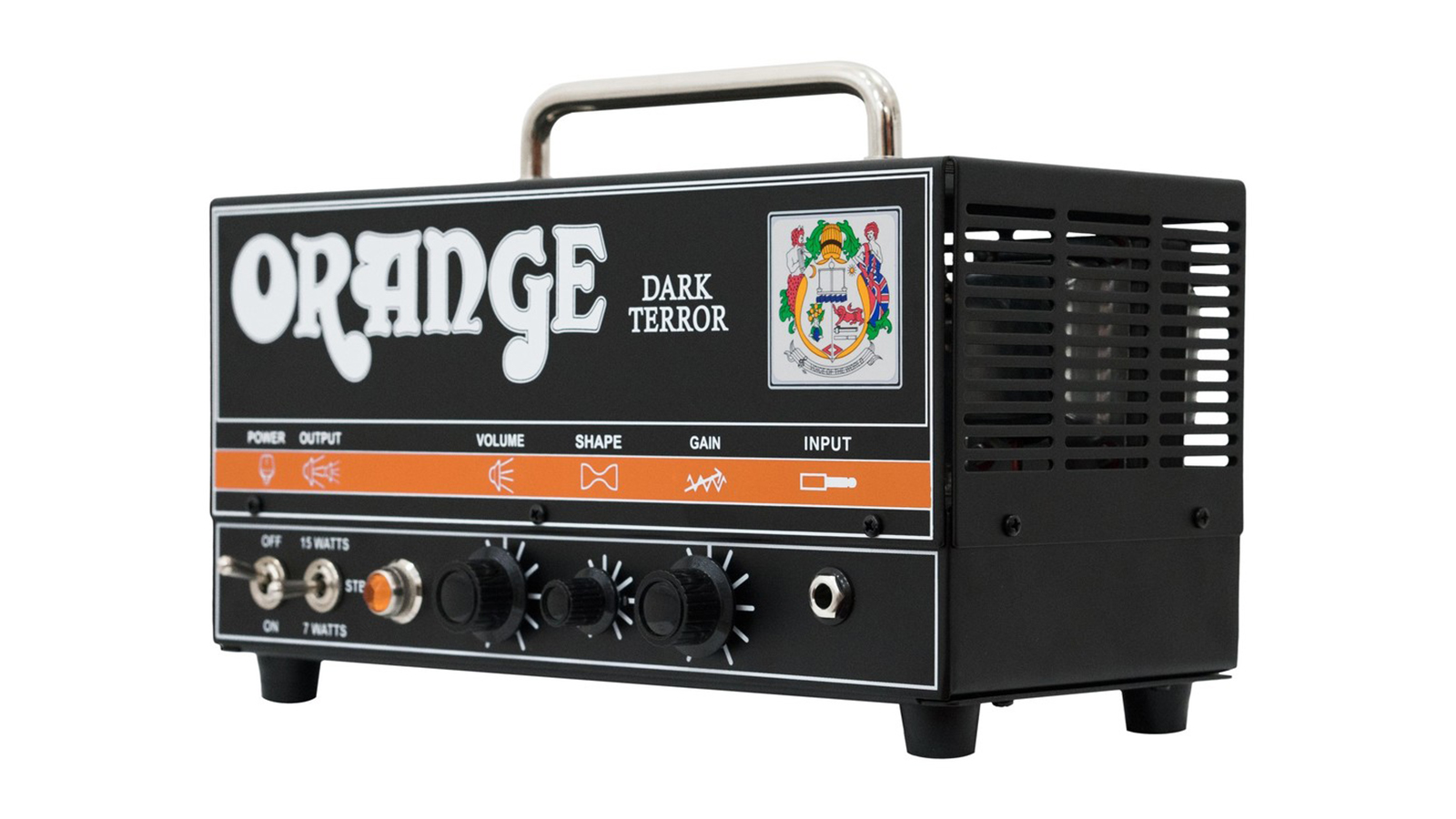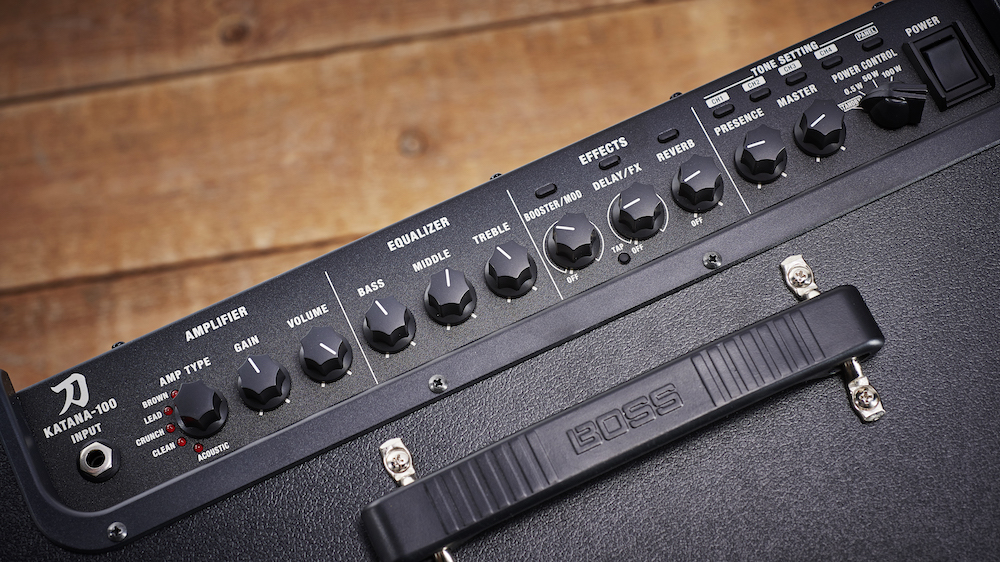Tube Amps Vs Solid State Amps: What’s The Difference?
Which kind of amplifier is best for projecting your signature sound? Our expert comparison will help you decide...

For as long as both tube amps and solid state guitar amps have been around, players have weighed up the pros and cons of each to try to decide which option is better. Of course, the answer isn’t black and white, and what’s right for one guitarist might not be right for another.

There are hybrid amps out there that use a mixture of tube and solid state technology. Usually, there’s a single tube in the preamp section, along with a solid state power amp section. The idea is to give players tube-style overdrive as they turn up the volume or gain on their preamp, in a lighter and cheaper package.
Once upon a time, tube amps were the only proper means of amplifying a guitar’s signal. Transistor, or solid state, amps came about in the ’60s and really took off in the ’70s. For the most part, they were lighter and cheaper than their tube counterparts, and their sound remained cleaner at higher volumes. However, the natural overdrive and compression that you get with tube amps continued to hold an allure over many players, and still does today.
What are the key differences between tube amps and solid state amps? In this guide, we’ll cover areas such as tone, feel, cost and practicality, to help you figure out what might be best for you.
Before we compare tube amps vs solid state amps, though, a quick word about how each type works. In a tube amp, vacuum tubes are used in both the preamp and power amp sections to boost your signal. When more signal is sent to the amp via the gain or volume knobs, the tubes will be pushed harder and more electrons will flow through the tubes, resulting in harmonic distortion. Tube amps also require a transformer to help drive the speaker. In a solid state amp, these tubes are replaced with transistors that do not react in the same way to more signal being fed through them. In modeling amps, digital processors are used to emulate the function and response of tubes.
Tube amps vs solid state amps: Tone

Arguably the most important factor with any amplifier is its tone. The different components used in tube and solid state amps lead to different tonal characteristics that render them perfect for some players but not for others.
Tube amps tend to sound a little warmer. When pushed, tubes usually add even order harmonics that our ears generally deem musical and pleasing. As you increase the volume or gain on a tube amp, you get harmonic distortion and natural compression.
This is the case in both the preamp and the power amp sections, which means that as you increase the volume on a tube amp, you start to get some natural breakup. Different amps and tubes will break up at different points, as we’ll discuss later. Solid state amps usually have more clean headroom, so, unless you’re purposely dialing in gain, your tone will stay clean even when the volume is high. While some players claim that solid state amps can sound a little tinny or harsh, it’s important to note that a lot of modern examples have come a long way from what they once were.
All the latest guitar news, interviews, lessons, reviews, deals and more, direct to your inbox!
The sound of most rock and blues records has been defined by the natural warmth, crunch and compression of cranked tube amps, and a lot of the time that’s what players want – it’s what a lot of us have fallen in love with over the past 60+ years. However, some guitarists want an amp that stays clean at any volume – many jazz players opt for solid state amps because it means they’ll be guaranteed a clear, clean tone even when they’re playing loudly in bigger venues. The Roland Jazz Chorus is a great example of this.
Different brands often utilize different tubes in their amps’ power sections, all of which yield slightly different characteristics. Usually – though not always – you’ll find 12AX7 or 12AT7 tubes in the preamp section.
A lot of the associations we make with certain amp companies come from the different power tubes they use. For example, EL34s are often associated with British amps (i.e. those made by Marshall), while 6L6 tubes are associated with US amps (such as the models in Fender’s lineup).
Tube amps vs solid state amps: Feel
It might seem odd to talk about the feel of an amp – that’s how it responds to your fingers on the guitar’s strings – but playing through a tube amp is slightly different to playing through a solid state amp.
Tube amps add natural compression as you increase the signal flowing through them. This makes notes sound different as you play – they’ll compress more when you dig in with your picking hand, and they’ll clean up and sound more open as you use a softer attack. The compression added naturally by a tube amp usually enables you to play more expressively, and with more dynamics. Most solid state amps don’t compress at all, regardless of how loud you have them. Neither is better, but often different players will have a preference.
Tube amps vs solid state amps: Practicality

When looking at the differences between tube amps and solid state amps, it’s important to consider how practical they are.
If, as discussed above, you get more out of a tube amp when it’s turned up, then won’t it get very loud? Essentially, yes – especially if you’re playing through a high-powered tube amp with no attenuation.
When a lot of the tube amps that are still popular now – such as the Marshall Super Lead – were invented, they were designed to fill venues without being mic’d up through a PA, so you could crank them. Nowadays, amps don’t need to be that loud, so turning the volume up on a 100W tube amp isn’t practical in nearly every scenario. If you’re playing in big venues, you’ll get away with it; however, if you turn up to play at a bar with a cranked Plexi, then you’re probably going to be far too loud. With a solid state amp, you’ll get the same tone at any level, so you can dial the volume to suit the room you’re playing in.
Tube amps have come on since the ’60s, though, and not all of them are high-powered. Many modern tube amps give you the option of switching down to a lower wattage, so if you’re playing a show and want the clean headroom, run it at the higher setting. However, if you’re playing at home and you want that natural tube overdrive, switch it down to the lower power setting and crank the volume to really get those tubes singing. It’ll still be fairly loud, depending on your amp, but it’ll be considerably more manageable.
If you’re using a solid state amp, you can run it at full volume or you can set it to just under one – you’ll still get the same tone.
It’s also worth noting here that, most of the time, a 50W tube amp will likely be able to pump out more volume than a 50W solid state amp – but remember to factor in clean headroom if you need it.
There’s the issue of tubes being fragile, too. They are, after all, small pieces of glass and metal, which means they can easily smash if dropped. That said, as long as you take care of your amp and secure it in place when traveling in a car or van, you won’t need to worry too much.
Tube amps vs solid state amps: Weight
Tying in with practicality is weight. Generally speaking, tube amps are heavier than solid state amps. This is largely because of the transformers that are needed between the power amp and the speaker. If you’re looking for an amp to stay in one place, then this will be less of a concern. However, if you’re going to be moving it around from home to rehearsal space to concert venue, then it’s a consideration that shouldn’t be overlooked.
Tube amps vs solid state amps: Cost
Again, there are exceptions to this, but tube amps tend to be more expensive than solid state amps. You can get a decent starter solid state amp for between $100 and $200 (the Orange Crush 20RT being a prime example), whereas your starting point for a good tube amp is going to be around $500.
Tube amps vs solid state amps: Features
Every amp is different, but you’re more likely to see a greater number of features on a solid state amp, and for less money.
Solid state modeling amps, such as the Boss Katana, will give you a wide range of amp sounds. If you want an approximation of a Fender amp’s sound, as well as the high-gain saturation of a more metal-flavored amp – and everything else in between – then you might benefit from a modeling amp.
You’re more likely to see effects built into solid state amps, too. Many models, such as those in the Fender Champion line, include a bunch of different effects, from modulations to octaves and beyond, saving you money on effects pedals. There may be a few exceptions, but the most you’ll normally see built into a tube amp is reverb and tremolo.
A lot of newer modeling amps can even be updated at home – just plug the amp into your computer via USB to download the latest sounds, presets, etc.
That said, newer tube amps are starting to add features like DI output, which can be used both live and for recording. Some, like many Blackstar tube amps, even have a USB output for direct recording with speaker emulation.
Tube amps vs solid state amps: Upkeep

Tube amps require a little more maintenance than solid state amps. Tubes don’t last forever, and you might notice that your amp gradually loses definition or that there’s some unwanted background noise.
How often you should replace your tubes depends on how often you use the amp, and at what volume. If you play daily and at high noise levels, then you’ll wear the tubes out faster than if you play at home a few times a week, at bedroom levels.
Solid state amps don’t really need any maintenance, although you should look after them as you would with any piece of gear! For both types of amp, it’s recommended that you use a dust cover when you’re not using them.
After spending a decade in music retail, I’m now a freelance writer for Guitar Player, Guitar World, MusicRadar and Reverb, specializing in electric and acoustic guitars bass, and almost anything else you can make a tune with. When my head’s not buried in the best of modern and vintage gear, I run a small company helping musicians with songwriting, production and performance, and I play bass in an alt-rock band.

